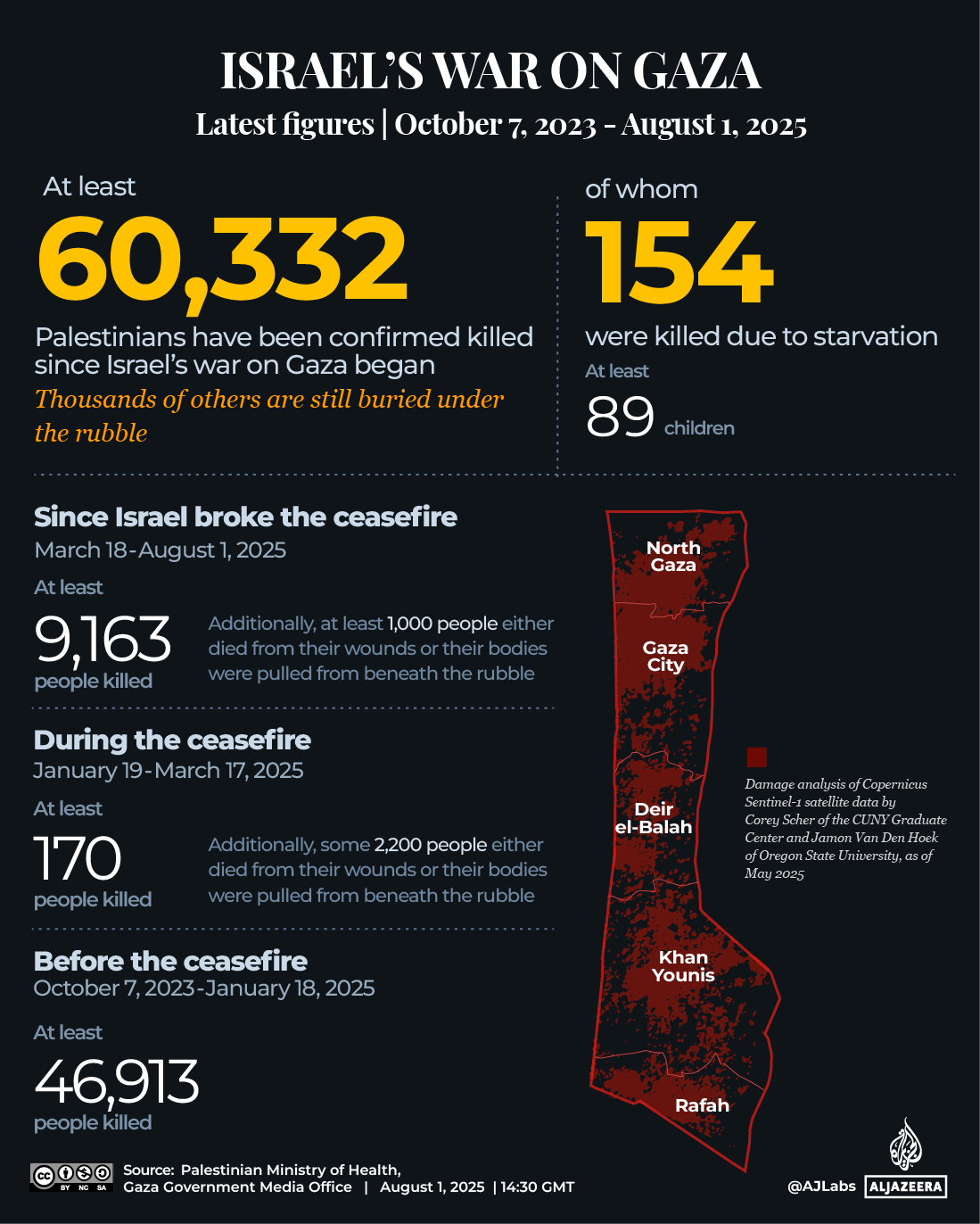One in three people in Gaza go days without eating, according to UN Children’s Fund (UNICEF).
UNICEF urged the world to act quickly as the world’s conditions continue to worsen as a result of Israel’s genocidal war.
More than 320, 000 young children are currently at risk of acute malnutrition, according to Ted Chaiban, UNICEF’s deputy executive director for humanitarian action and supply operations, in a statement released on Friday following a recent trip to Israel, Gaza, and the occupied West Bank.
He claimed that Gaza’s malnutrition rate “exceeded the famine threshold.”
He said, “Today, I want to keep the focus on Gaza because it’s where children are dying at an unprecedented rate and the suffering is most acute there.”
The decisions made today will determine whether tens of thousands of children will live or die.
A doctor at al-Shifa Hospital reported to Al Jazeera that Atef Abu Khater, a 17-year-old Palestinian, had passed away from malnutrition on Saturday.
Khater, who had been well before the Gaza war, was taken into intensive care earlier this week, according to media reports, who quoted his father as saying he was no longer responding to treatment.
At least 60, 000 Palestinians have died as a result of Israel’s war against Gaza since October 7, 2023, including more than 18 000 children. Many more are still buried beneath the rubble, most likely dead.
The Ministry of Health in Gaza reports that there are 162 deaths from starvation, including 92 children.
Engineered Israeli genocidal chaos
Palestinians in the besieged territory are subject to “tragedy and torment” under Israeli bombardment, forced starvation, and a general feeling of insecurity, according to Ahmed al-Najjar, a journalist and resident of Gaza who lives in Khan Younis.
The mice will play with the cats out, but it’s not just a mouse, he claimed, underscoring that Gaza’s safety is “nowhere to be found.”
We are not just referring to the constant fear of Israeli bombs being dropped on our heads, but also the complete lack of power and security that causes us to be unsure and uneasy about our own safety, al-Najjar said.
He claimed that people are unsure whether they will be able to return home safely despite walking down the street and purchasing a bag of flour.
We’ve been witnessing the police forces being targeted repeatedly and systematically inside these “safe zones” here, which prohibits the presence of any kind of police or security forces in the streets.
Israel halted Gaza’s access to food aid in March. In late May, it eased the blockade, and GHF, a controversial organization supported by Israel and the United States, took over the distribution of aid in Gaza.
However, GHF has been accused of targeting civilians and grave rights violations. More than 1,300 Palestinians were killed while trying to get food from the GHF’s aid centers, according to the UN.
According to testimony from whistleblowers , many have been purposefully shot by Israeli soldiers or US security contractors hired by GHF.
International outcry over images of abused children and growing reports of deaths related to hunger prompted Israel to release more aid earlier this week as the Strip’s hunger spread.
Last week, the Israeli military set up new aid corridors and began a daily “tactical pause” of its military operations in some of Gaza.
Steve Witkoff, the US ambassador to Israel, and US President Donald Trump’s special envoy, also traveled to Gaza on Friday to check out the GHF aid distribution site.
In a post on X, Witkoff posted a photo of himself wearing a protective vest and meeting with staff at a distribution center that read, “The diplomats spent more than five hours inside Gaza.”
He continued, “Assisting with a plan to deliver food and medical aid to the people of Gaza,” adding that the trip was intended.
In Gaza, several Western and Arab governments started distributing aid to more than two million people in the first week of the week. However, aid organizations have expressed skepticism about the safety of airdrops in order to address Gaza’s growing hunger crisis.
Every mode must be used at this point, Chaiban said, adding that it is crucial to allow 500 humanitarian and commercial aid trucks into Gaza. However, airdrops cannot replace that volume and scale that road convoys can achieve.
Source: Aljazeera

Leave a Reply